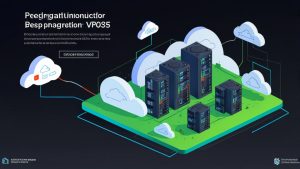1. Defining Goals and Requirements
Before integrating server monitoring with DevOps processes, you need to define your organization’s goals and requirements. Specify which specific metrics you need to monitor and optimize server performance, and which DevOps processes you want to automate.
2. Choosing a Monitoring Tool
To integrate server monitoring with DevOps processes, it’s important to choose the right tool. There are many options: from open-source solutions like Prometheus and Grafana to commercial products such as Datadog and New Relic. Compare their features, ease of use, and cost to choose the most suitable option.
3. Setting up Monitoring
After choosing a monitoring tool, you need to configure it to meet the specific needs of your system. Define the necessary metrics, set up alerts to respond promptly to problems, and configure dashboards for easy display of information.
4. Integration with DevOps Processes
For successful integration of server monitoring with DevOps processes, you need to automate the collection and analysis of metrics. Use CI/CD tools such as Jenkins or GitLab CI to automatically include monitoring in your workflow. Also, ensure integration with configuration management systems such as Ansible or Puppet.
5. Scaling and Optimization
Monitor the growth of your infrastructure and scale the monitoring accordingly. Optimize processes by analyzing data to eliminate bottlenecks in server performance and improve the overall system performance.
6. Continuous Improvement
Server monitoring and integration with DevOps processes is a continuous process. Constantly analyze results, implement improvements, and follow new trends in monitoring and automation. Only in this way can you achieve maximum efficiency and reliability of your infrastructure.
These steps will help you successfully integrate server monitoring with DevOps processes and ensure the stability and performance of your infrastructure. Don’t forget to constantly update and improve processes to achieve the best results.





